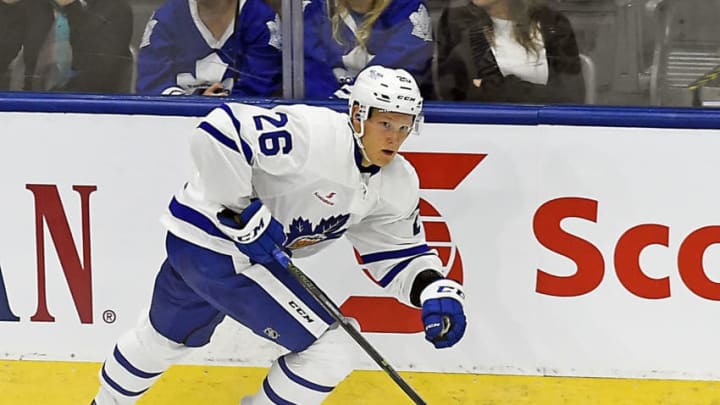The Toronto Maple Leafs traded Nikita Soshnikov to the Blues.
For the Toronto Maple Leafs, the return was a measly fourth round pick. For a player who looks capable of being a solid third or fourth line NHL option, it seems like an underwhelming return.
Then again, salary caps, contracts, draft picks and acquisition cost can all play a part in assessing the return, so perhaps we shouldn’t be so quick to write of a fourth round pick.
Let’s take a look and see if we can come to any conclusions about whether this was a good or a bad move by the Leafs.
Player
Soshnikov is 24 year old. He has played a total of 70 NHL games and scored seven goals and 14 points. During this time, he was a 47% possession player with a relative expected goals differential of -2.2%.
More from Editor In Leaf
- Toronto Maple Leafs: Nick Robertson Healthy and Ready
- Ryan Reaves Will Have Zero Impact on Toronto Maple Leafs
- Toronto Maple Leafs: Playing Max Domi In Top-Six a HUGE Mistake
- Top 10 Scandals in the History of the Toronto Maple Leafs
- Toronto Maple Leafs: Results from the Traverse City Prospects Tournament
It’s possible that with better minute, more minutes, different minutes / linemates etc. that Soshnikov improves as a player. Certainly his recent AHL season was better than his previous ones, and players often improve on their rookie seasons – so it’s reasonable to assume he’ll be a better player than he has been in the NHL so far.
As a counterpoint, the vast majority of players are what they are at age 24, and Soshnikov is a player who could not crack the current Leafs lineup.
Contracts / Salary Cap
One big advantage for the Leafs in moving Soshnikov for a pick is that it opens up a roster spot w/r/t the 50 Contract Limit. The Leafs now have 49 standard player contracts.
Soshnikov was on an entry-level contact, so the savings on this year’s salary cap are negligible. He will be a restricted free-agent, so the Leafs would have to give him a raise in the summer, if they wanted to keep him.
Conclusion
Soshnikov didn’t cost the Leafs anything to sign (other than money) and they flipped him for a fourth round pick after getting 70 NHL games and 77 AHL games out of him. This seems like a profit. The only way it’s a loss is if they gave away a player so good that they should have kept him. One could argue that trading Komarov would have brought a higher return and opened up a spot for Soshnikov, but Komarov is an elite defensive forward and there is no guarantee that Soshnikov is ever as good as Komarov. He is almost certainly not right now.
That is a move all but guaranteed to hurt the Leafs this season, and with a reasonable chance of competing for a Cup, or at least winning a couple rounds in the Playoffs, that doesn’t make sense to get a one or two round higher draft pick.
There is an argument to be made that the Toronto Maple Leafs could have better managed their assets so that Soshnikov would have been worth more, but that’s hypothetical and it’s impossible to know for sure. At the end of the day he’s old for a prospect, has a contract that ensures he is in the NHL if you want to keep him, has no history of being able to score in the NHL, or of limiting shots, and he didn’t cost the team anything to acquire. Furthermore, to retain him in the summer would mean that you have to give a raise and a contract slot to a guy you’re not really sure about.
A fourth round lottery ticket, one contract slot is a decent return. It’s not exciting, but since a guy isn’t likely to sign with a team that doesn’t play him anyways, it seems like a good enough return for an expiring asset.
